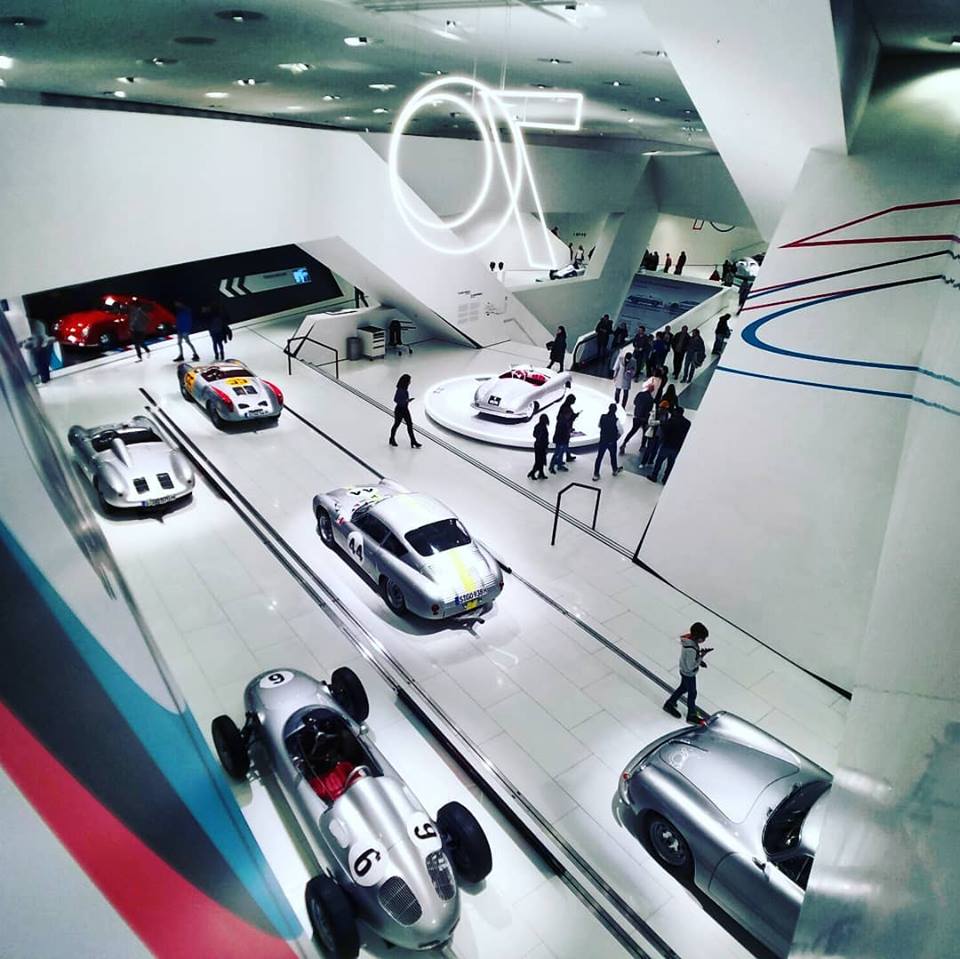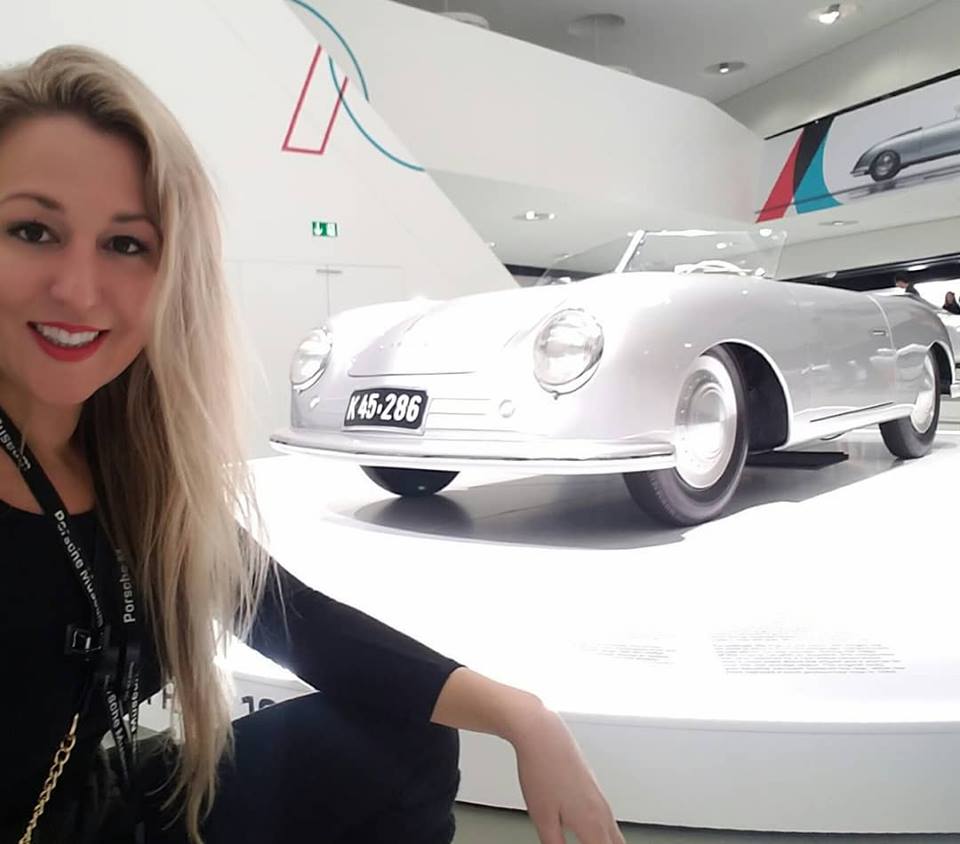PORSCHE MUSEUM
/PORSCHE MUSEUM - 70th Year Celebration of the 356
Closed my eyes on a train in Zurich, Switzerland and awoke to Porsche paradise in Stuttgart, Germany. The famed Porsche Museum is high on every car enthusiasts list and for good reason. The Porsche Museum in immediately impressive architecturally. A reflective overhang of mirrored glass, leaves the traveler walking below in a trance like tunnel. And then the real excitement begins once you’ve passed the threshold and entered into an exquisitely designed curation of Porsche’s past, present, and future.
THE PORSCHE MUSEUM
The museum well designed sweeping levels allows views from all areas
The entrance is a meager 8 euros and comes with free audio guide which I always greatly appreciate!Once inside, with minimalist design and white from wall to wall, the entrance is flanked with a large escalator and stairs take you to beginning of the chronological exhibits.
The below floor maintains a very well stocked café. I enjoyed an energy sparking espresso and smoked salmon sandwich. The limited seating area of the café allow peaks into one of what I would imagine many mechanic areas of the Porsche complex. I consumed the snack and coffee quickly, then made my way to the beginning of my Porsche journey.
Your eyes can cast a sweeping view of the entire museum while the massively long escalator transports you.
I was fortunate to be visiting during the grand 70th celebration of the 1948 Porsche 356. The first feat of engineering and style that would put Porsche on the map.
1948 PORSCHE 356
Celebrating over 70 years of the stylized automobile that put Porsche on the map
Over 80 vehicles and many small exhibits are on display, including such iconic vehicles such as the 356, 550, 911, 917, and 959. Many of the exhibits earmark some Ferdinand Porsche’s 20th century mechanical achievements.
The 356 is a easy to handle and light weight, rear-engine, rear-wheel drive, two-door with both hardtop coupé and open options. Engineering innovations continued during the years of manufacture, contributing to its Motorsports success and popularity. The 356 production started in 1948 in Austria, with approximately 50 cars manufactured. In 1950 the factory relocated to Germany, and production of the 356 continued until 1965. The 356 maintained production even after the newer model 911 was introduced. Of the 76,000 original Porsche 356 built, it is guessed that only half still exist.
“The Pig”
One of the most notable of Porsche 917/20 racers
The most notorious aspect of The Pig is the eye-catching paintwork which let the 917/20 go down in Porsche history as the "Pink Pig", or even "Truffle Hunter". Porsche designer Anatole Lapine was behind the pink body colour and labelled each of the body parts according to the butcher-style cuts. The Pink Pig Porsche caused a sensation at Le Mans 1971 and still is notorious among Porsche fans.
A bucket list visit
Porsche and it’s history of glorious design has played a significant role in my life
Porsche holds a special place in my little heart. At 14 years old, I began a forever journey that would greatly influence my humor, life outlook, and over all toughness of character. I began a car restoration. I undertook the restoration of a beat up, Bondo crusted, and yet beautiful 1976 Porsche 912e. And I will be forever grateful for every drop of blood, sweat, tears, and cut knuckle that followed.
An interesting piece of history was when Porsche decided to design a tractor. Due to WWII specifications and licensing, not all manufactures were able to produce what they wished so Porsche sold it’s tractor design to a manufacture licensed to create tractors.














